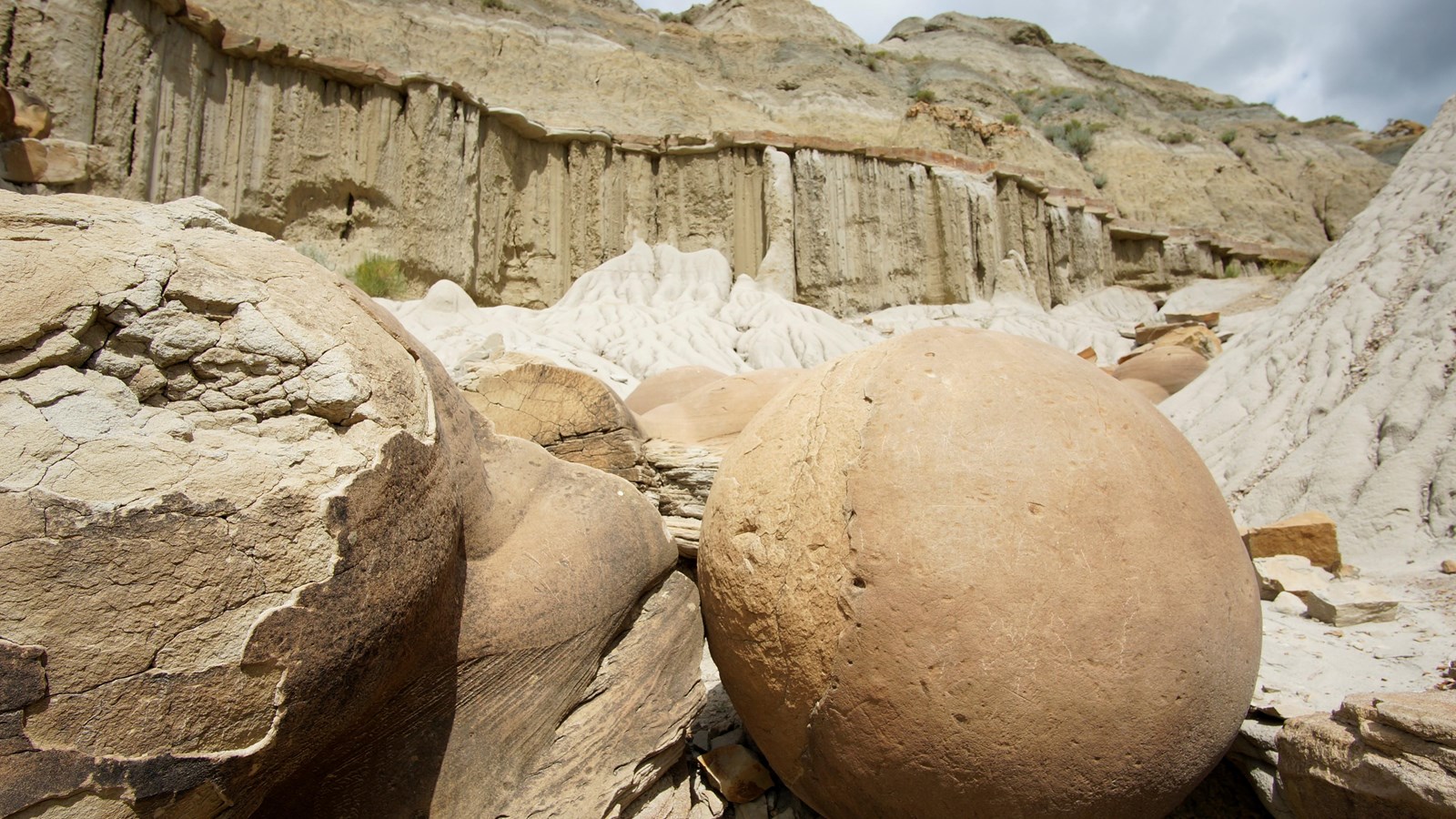Imagine a rock that lays eggs; giant stone spheres that seem to hatch straight out of the earth itself. It sounds like something out of an ancient myth or a tripped-out journey through the desert, but they’re a perfectly natural phenomenon formed through a secret recipe of water, minerals, and time.
Scientifically, they’re known as cannonball concretions. They’re formed when mineral-rich water drips through the layers of rock into empty pockets within the sediments. The minerals gather around a solid nucleus, like a fossil or some organic material, and act like glue, binding small sediment particles together. Over time, this hardens into a solid shell, and the process repeats, adding layer upon layer around the nucleus until a large, round boulder is formed.
These geological gumballs are buried within the layers of the rock, mostly unseen to the outside world. However, it is possible for them to be revealed and released by erosion, which frees the egg-like formations through centuries of wind and rain.

Cannonball Concretion Pullout in the North Unit of Theodore Roosevelt National Park.
Image credit: NPS Photo/J. Zylland
One such place is Theodore Roosevelt National Park in western North Dakota, where a site called the Cannonball Concretion Pullout displays a bunch of these geological oddities in their natural setting. More famous hotspots in the US with cannonball concretions include the Cannonball River in Morton and Sioux Counties, North Dakota, and Rock City in Ottawa County, Kansas.
It’s no surprise that people have attached fantastical myths to these unusual formations. Perfectly smooth rocks, known as Moeraki Boulders, are scattered across Koekohe Beach along the Otago coast of New Zealand. Local Māori legend says the strange rocks are the remains of eel baskets and gourds washed ashore from a legendary canoe wreck. These rocks are actually a type of septarian concretion, formed with a cracked, segmented internal structure that has been smoothed over time by natural erosion.
Perhaps one of the weirdest examples of concretions can be found in a remote corner of Qiannan Buyei and Miao Autonomous Region in China’s southwestern Guizhou province. The nearest village contains just 20 households, but the region has become well-known for its strange “egg-laying” rockface that regularly pumps out cannonball concretions.
It’s said the rock sheds an egg-shaped concretion, measuring around 20 to 40 centimeters (8 to 16 inches) in diameter, every 30 years or so. It’s not clear why this process is so speedy, relatively speaking, but it’s likely to have something to do with the region’s calcareous geology and its damp monsoon climate.
Source Link: The Strange "Egg-Laying" Rockfaces Of Planet Earth